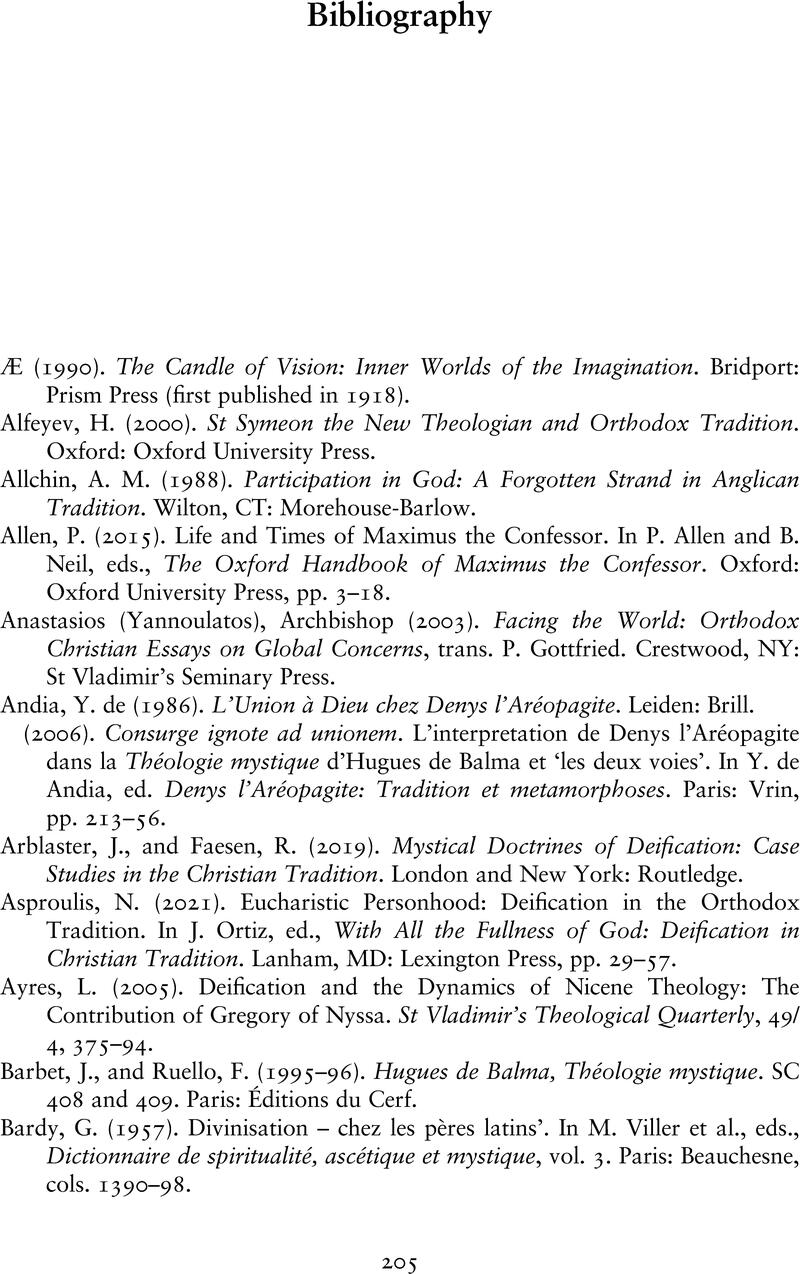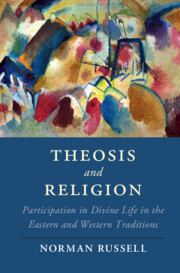Book contents
- Theosis and Religion
- Cambridge Studies in Religion, Philosophy, and Society
- Theosis and Religion
- Copyright page
- Dedication
- Contents
- Preface
- Abbreviations
- Introduction
- 1 What Is ‘Religion’, What Is ‘Theosis’, and How Are They Related?
- 2 Byzantium
- 3 The Latin Heirs of Dionysius
- 4 ‘Light the Lamp within You’
- 5 ‘People Will Be Gods’
- 6 ‘The Via Regia’
- 7 One with God
- 8 Afterword
- Bibliography
- Index
- References
Bibliography
Published online by Cambridge University Press: 07 March 2024
- Theosis and Religion
- Cambridge Studies in Religion, Philosophy, and Society
- Theosis and Religion
- Copyright page
- Dedication
- Contents
- Preface
- Abbreviations
- Introduction
- 1 What Is ‘Religion’, What Is ‘Theosis’, and How Are They Related?
- 2 Byzantium
- 3 The Latin Heirs of Dionysius
- 4 ‘Light the Lamp within You’
- 5 ‘People Will Be Gods’
- 6 ‘The Via Regia’
- 7 One with God
- 8 Afterword
- Bibliography
- Index
- References
Summary

- Type
- Chapter
- Information
- Theosis and ReligionParticipation in Divine Life in the Eastern and Western Traditions, pp. 205 - 222Publisher: Cambridge University PressPrint publication year: 2024



